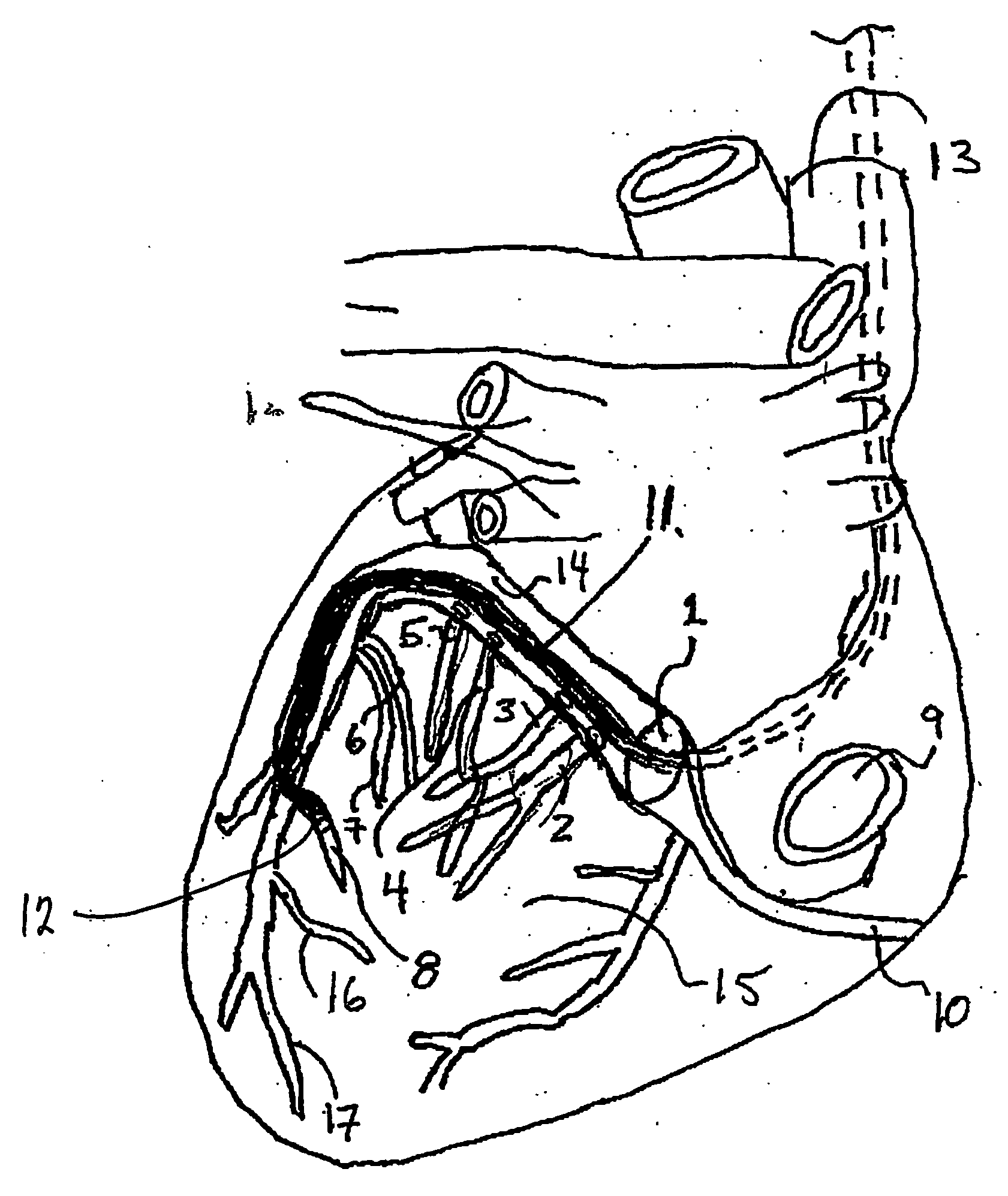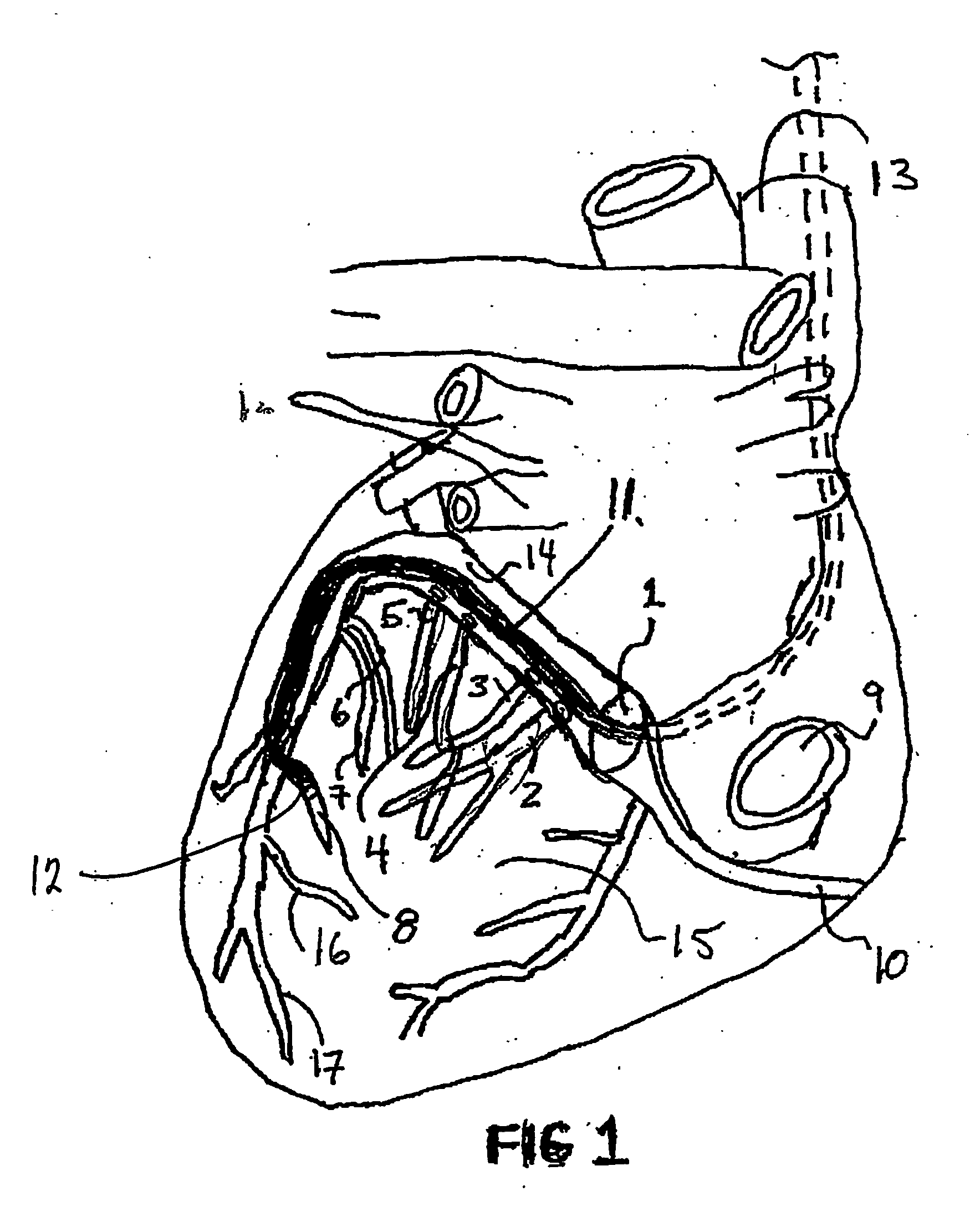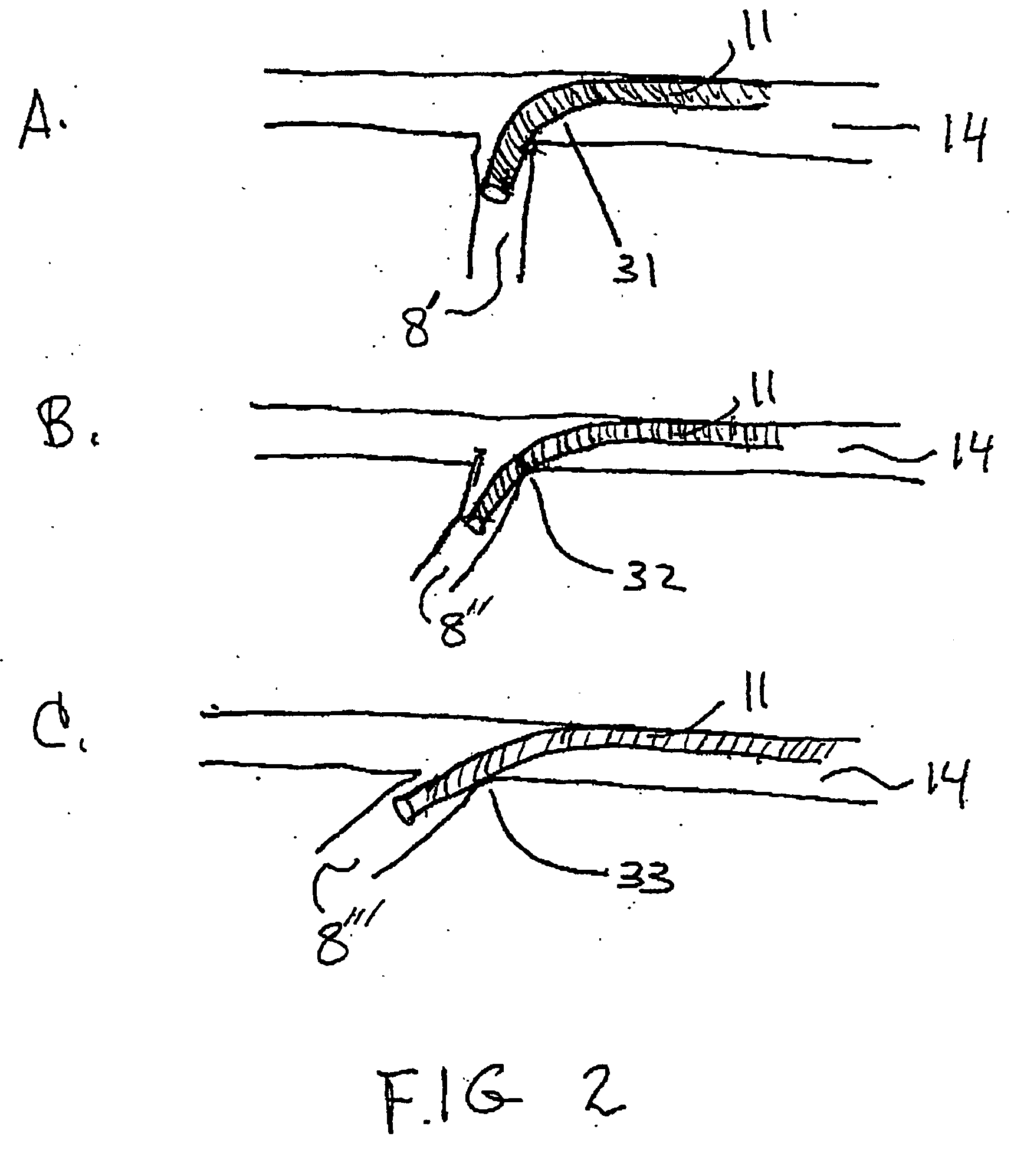Coronary sinus access catheter with forward-imaging
a catheter and coronary sinus technology, applied in the field of coronary sinus access catheters/introducers, can solve the problems of cellular death, discontinuation of rapid heart rate, and difficulty in finding the opening, and achieve the effect of less rotation
- Summary
- Abstract
- Description
- Claims
- Application Information
AI Technical Summary
Benefits of technology
Problems solved by technology
Method used
Image
Examples
Embodiment Construction
[0042]FIG. 1 shows the expected route of the catheter (11) as it is inserted onto the coronary sinus to a position in the anterior-lateral branch (8) of the coronary sinus vasculature. A sinus lead (12) is inserted through a puncture or cutdown technique into the subclavian vein where it eventually enters the superior vena cava (13). The lead is directed to the tricuspid valve plane in the lower right atrium where the os of the coronary sinus (1) is located. The os of the coronary sinus (1) is located near the tricuspid valve and the inferior vena cava (9). After entry into the coronary sinus os, the coronary sinus diverges into the great cardiac vein (14) and the right coronary vein (10). Directing the catheter (11) in the direction of the great cardiac vein (14) requires a tight radius deflection towards the left side of heart. As the catheter traverses the coronary sinus (1), several branch points called the posterior lateral coronary veins (2,3,4,5) run laterally along the left ...
PUM
 Login to View More
Login to View More Abstract
Description
Claims
Application Information
 Login to View More
Login to View More - R&D
- Intellectual Property
- Life Sciences
- Materials
- Tech Scout
- Unparalleled Data Quality
- Higher Quality Content
- 60% Fewer Hallucinations
Browse by: Latest US Patents, China's latest patents, Technical Efficacy Thesaurus, Application Domain, Technology Topic, Popular Technical Reports.
© 2025 PatSnap. All rights reserved.Legal|Privacy policy|Modern Slavery Act Transparency Statement|Sitemap|About US| Contact US: help@patsnap.com



